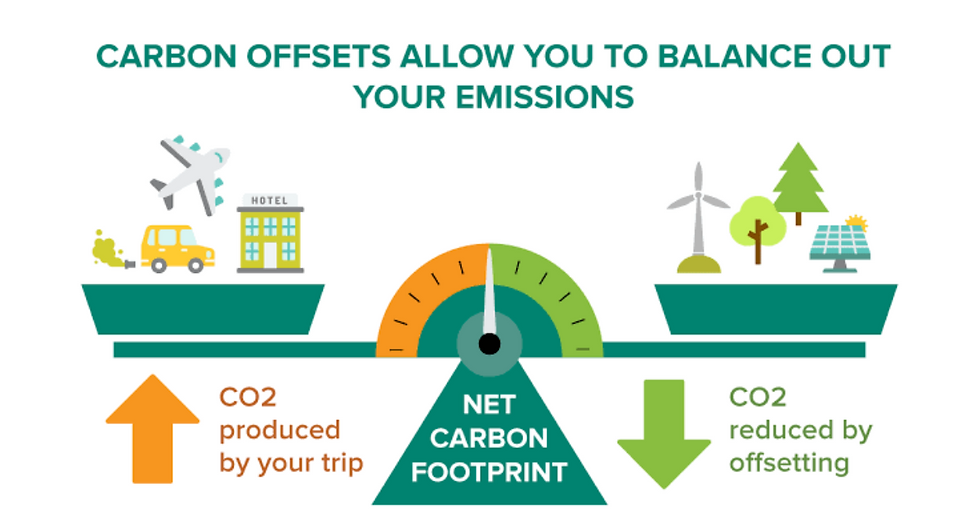The Science of Carbon Footprints: Measuring and Reducing Your Environmental Impact
- Youth for Environment in Schools Organization YES-O
- Nov 28, 2023
- 3 min read

In our interconnected world, the concept of a carbon footprint has become a key metric in understanding and addressing individual contributions to climate change. A carbon footprint represents the total amount of greenhouse gases, particularly carbon dioxide, that an individual, organization, or product is responsible for emitting, directly or indirectly. Understanding and reducing your carbon footprint is a proactive step towards mitigating the impacts of climate change. In this exploration, we delve into the science of carbon footprints, explaining how individuals can measure and take steps to reduce their personal impact on the environment.
1. Understanding the Components of a Carbon Footprint

A carbon footprint encompasses both direct and indirect emissions associated with various activities. Direct emissions include those produced by personal activities such as driving a car or heating a home. Indirect emissions, often referred to as embodied carbon, are associated with the entire lifecycle of products and services, from production to disposal. This comprehensive view helps individuals identify areas where they can make meaningful changes to reduce their overall environmental impact.
2. Calculating Your Carbon Footprint

Several online calculators and tools are available to help individuals estimate their carbon footprint based on lifestyle choices. These calculators take into account factors such as energy consumption, transportation habits, dietary choices, and waste generation. By inputting relevant data, individuals can gain insights into the primary sources of their carbon emissions and identify areas for improvement.
3. Transportation Choices

One of the significant contributors to individual carbon footprints is transportation. Choosing sustainable options, such as walking, biking, carpooling, or using public transportation, can significantly reduce carbon emissions associated with personal travel. Additionally, opting for fuel-efficient or electric vehicles contributes to a lower carbon footprint.
4. Energy Efficiency at Home

Reducing energy consumption at home is a crucial step in minimizing your carbon footprint. Simple measures such as using energy-efficient appliances, properly insulating your home, and adjusting thermostat settings can lead to significant energy savings. Transitioning to renewable energy sources, such as solar or wind power, further decreases the carbon intensity of your energy consumption.
5. Sustainable Food Choices

The food we consume also plays a substantial role in our carbon footprint. Plant-based diets generally have a lower carbon footprint compared to diets rich in animal products. Choosing locally sourced and seasonal produce, reducing food waste, and supporting sustainable farming practices contribute to a more environmentally friendly food footprint.
6. Consumer Choices

The products we buy and the companies we support can have a significant impact on our carbon footprint. Opting for products with minimal packaging, made from recycled materials, and produced using sustainable practices helps reduce embodied carbon. Supporting businesses committed to environmental responsibility encourages a shift towards more sustainable consumption patterns.
7. Waste Reduction and Recycling

Waste management contributes to carbon emissions, particularly in landfills. Minimizing waste through practices such as recycling, composting, and reducing single-use items helps lower your carbon footprint. The production and disposal of goods generate emissions, so extending the lifespan of products through recycling or repurposing further contributes to carbon reduction efforts.
8. Carbon Offsetting

For emissions that are challenging to eliminate entirely, individuals can consider carbon offsetting. This involves investing in projects that reduce or capture an equivalent amount of greenhouse gases elsewhere. Projects may include reforestation, renewable energy initiatives, or methane capture from landfills. While offsetting should not replace direct emissions reductions, it can be a supplementary strategy for achieving a net-zero carbon footprint.
9. Advocacy and Community Engagement

Individual actions are impactful, but collective efforts drive systemic change. Engaging with communities, advocating for sustainable policies, and supporting initiatives that promote renewable energy and conservation contribute to a broader movement towards a low-carbon future.
10. Continuous Improvement and Education

Reducing your carbon footprint is an ongoing process that requires continuous improvement and education. Stay informed about evolving sustainability practices, technologies, and policies. Embrace a mindset of lifelong learning and adapt your lifestyle choices accordingly.
In conclusion, the science of carbon footprints empowers individuals to make informed choices that collectively contribute to a more sustainable and resilient planet. By understanding, measuring, and actively reducing our carbon footprints, we can play a vital role in addressing the challenges of climate change and fostering a healthier environment for current and future generations.




Comments